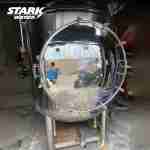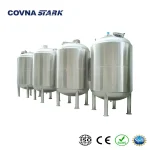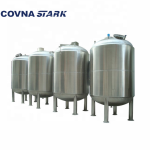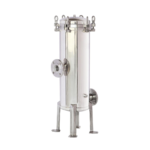In today’s manufacturing and processing industries, water is more than just a utility—it’s a critical part of the operation. Yet, many companies underestimate how much damage poor water treatment can cause to their systems, equipment, and bottom line.
While large capital expenditures like new tanks or filtration systems are easy to quantify, the hidden costs—those tied to inefficiencies, downtime, regulatory risk, and excessive maintenance—often go unnoticed until they accumulate into significant losses.
This article uncovers how poor industrial water treatment silently erodes operational performance and explains what plant managers and procurement teams should watch out for.
Operational Disruptions and Downtime
Unplanned downtime is one of the most expensive outcomes of poor water treatment. When filtration systems underperform or allow excessive sediment, scale, or biological growth into the process line, critical equipment like boilers, heat exchangers, and reverse osmosis (RO) membranes can clog or corrode.
The result? Production lines halt, maintenance crews scramble, and delivery schedules slip. In high-output facilities, even a few hours of downtime can translate into tens of thousands of dollars in lost productivity.
At STARK, we’ve worked with clients who saw their daily operations stall due to untreated particulate buildup in pipelines—issues that could have been prevented with proper pre-filtration and high-efficiency mechanical filters.
Maintenance and Replacement Costs
Frequent replacement of filter cartridges, RO membranes, and corroded components is not just inconvenient—it’s a recurring cost that eats into your OPEX without delivering real performance gains.
When a system is not adequately protected by durable and properly designed pretreatment equipment, sediment and contaminants cause premature wear on sensitive parts. Maintenance teams are forced into a cycle of replacing components that should have lasted years, not months.
For example, low-quality filter housings made from plastic or light-gauge metals often crack under pressure or degrade when exposed to harsh water chemistry. By contrast, a high-grade SS304 stainless steel mechanical filter can operate for years with only periodic cleaning—offering both cost stability and operational confidence.
Regulatory Fines and Environmental Risk
Across global markets, environmental regulations are becoming more stringent. Poor water treatment doesn’t just affect your process—it can put your entire operation at legal and reputational risk.
Discharging wastewater that exceeds allowable limits can result in substantial fines, permit suspensions, or even production shutdowns. In regions like the EU, Middle East, and Southeast Asia, compliance with local water discharge standards is non-negotiable.
One of our clients in the food processing sector received a five-figure fine after recurring spikes in COD levels went undetected. The root cause? Inadequate pretreatment and inconsistent monitoring. Upgrading to a properly configured stainless steel mechanical filter system helped bring discharge levels back into compliance within weeks.
Energy Inefficiencies and Process Degradation
When untreated solids, scaling agents, or microbial growth enter your system, they don’t just clog equipment—they reduce its operational efficiency. Over time, even small inefficiencies in heat transfer, pressure regulation, or membrane permeability can compound into major energy losses.
For example, a fouled heat exchanger may require 15–30% more energy to maintain target temperatures. RO systems operating under excess pressure due to membrane fouling may burn through more kilowatts and reduce water recovery rates.
Many plant managers don’t associate rising utility bills with declining water treatment performance. But the link is real—and preventable. Proper filtration using high-capacity mechanical filters can significantly reduce the energy burden by keeping critical systems clean and efficient.
Case Reference: When Poor Pretreatment Costs More Than You Think
A mid-sized food processing facility in Southeast Asia experienced a 20% spike in production downtime over a three-month period. Maintenance reports consistently showed clogged RO membranes, reduced flow rates, and overheating in heat exchangers.
After a technical audit, it was discovered that their existing water pretreatment relied on outdated plastic cartridge filters, which allowed significant turbidity and organic matter to pass through. These seemingly minor oversights were costing the company over $35,000 per quarter in lost productivity and energy waste.
By upgrading to a stainless steel filtration system with better sediment retention and longer service intervals, the facility not only reduced downtime by 80% but also cut their membrane replacement rate in half. Within six months, the investment had paid for itself through saved costs and restored system efficiency.
How to Prevent These Hidden Costs
Addressing water treatment issues proactively is far more cost-effective than reacting to failures. The key lies in designing a robust pretreatment process tailored to your specific water source and operational demands.
Start by evaluating the quality and variability of your incoming water. Facilities using groundwater, surface water, or recycled process water should especially consider advanced filtration solutions that remove suspended solids, biological matter, and scaling agents before they cause damage downstream.
Regular system audits, preventive maintenance scheduling, and investing in long-lifecycle filtration equipment can reduce unplanned downtime, stabilize operating costs, and ensure long-term regulatory compliance.
Ultimately, the savings come not from cutting corners—but from making smarter decisions upfront.
Conclusion: See the Unseen, Protect Your Bottom Line
Water may be a silent partner in your operations, but poor treatment practices speak loudly through rising costs, equipment failures, and regulatory risks. The hidden costs of inefficient water management are real—and avoidable.
By taking a closer look at your filtration setup and investing in high-efficiency, long-life solutions, your facility can operate cleaner, safer, and more profitably.
Want to evaluate your current water treatment performance? Our technical team at STARK is ready to help. Contact us today for a no-obligation consultation and customized improvement plan.





